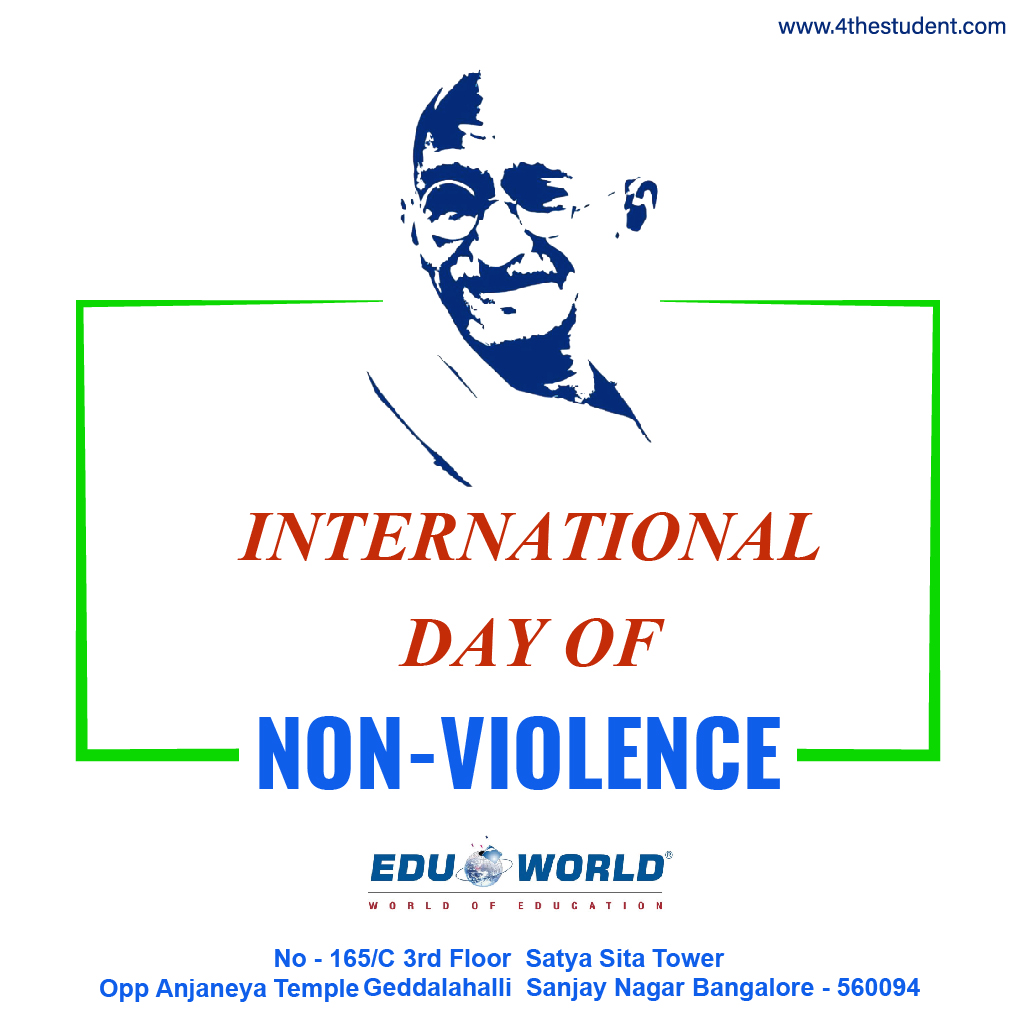The rejection of physical violence is what is meant by the term “non-violence. “The Non-Violence Project Foundation was established in 1993 to educate and inspire young people to acquire the skills necessary to peacefully resolve conflicts. Through civil disobedience, satyagraha, or economic or political non-cooperation, nonviolence supports social change goals. Nonviolence is an act of love that aids in resisting violence. We learn to help others and care for each other with love and compassion through nonviolence, which teaches us not to harm other people or animals or cause damage. Mahatma Gandhi believed that nonviolence was the most powerful tool at mankind’s disposal. Every year, on October 2, is observed the International Day of Nonviolence. Let’s look at the International Day of Nonviolence’s history, theme, significance, and quotes. Shirin Ebadi, an Iranian Nobel laureate in 2004, proposed establishing an International Day of Nonviolence. Eventually, some Congress Party leaders in India got behind this idea. They appealed to the United Nations to adopt the concept in January 2007. The resolution was approved by the UN General Assembly on June 5, 2007, and the International Day of Nonviolence was established. The non-violent freedom fighter Mohandas Karamchand Gandhi’s birthday is celebrated on October 2 with the International Day of Non-Violence. This day does not have a particular theme. The purpose of the International Day of Non-Violence is to “reaffirm the desire for a culture of peace, tolerance, understanding, and non-violence” and “disseminate the message of non-violence through education and public awareness.” Recent research indicates that nonviolent strategies perform twice as well as violent ones. The purpose of the International Day of Non-Violence is to raise global awareness of nonviolence.
Disciplined nonviolence has the power to transform our lives and relationships, as well as the world around us. In person, nonviolence can lessen rage and violence. Nonviolence is a powerful strategy for everyone that can aid in the peaceful transformation of societies. Truth and nonviolence are the two pillars that supported the entire structure of Mahatma Gandhi’s magnificent life and work. The eminent physicist Albert Einstein said that the structure was so impressive that “generations to come, it may be, will scarce believe that such a one as this ever in flesh and blood walked upon this earth,” and that it was built on these two pillars. Naturally, the Mahatma saw nonviolence and truth as two sides of the same coin. As a result, one can comprehend the significance of nonviolence in Mahatma Gandhi’s worldview and life philosophy. To be honest, nonviolence is now more urgently desired by humanity as a whole than at any other time in its history. These lethal weapons have been developed as a result of significant advancements in physical science. Before them, the human civilization—or even the species—would be extinct in a matter of seconds. Men could afford to be violent in ancient times, when science and technology were still in their infancy. However, the need for self-preservation has made it necessary for us to embrace nonviolence in the middle of the twentieth century, when the world was divided into two warring camps and they were both armed to the teeth with the most recent models of weapons designed to wipe out the entire population. Acharya Vinoba Bhava, the well-known proponent of nonviolence in modern India, has made the insightful observation that we must properly synthesise Vijnana and Atmajnana, i.e., science and self-knowledge, in this age.
Edu World believes that non-violence in its dynamic form, implies conscious suffering. It does not imply meek submission to the evildoer’s will; rather, it entails opposing the tyrant with one’s entire being. A single individual can, in accordance with this law of our being, defy the entire might of an unjust empire to save his honour, religion, and soul and lay the groundwork for that empire’s demise or rebirth.




